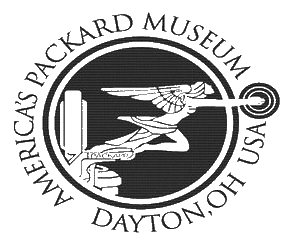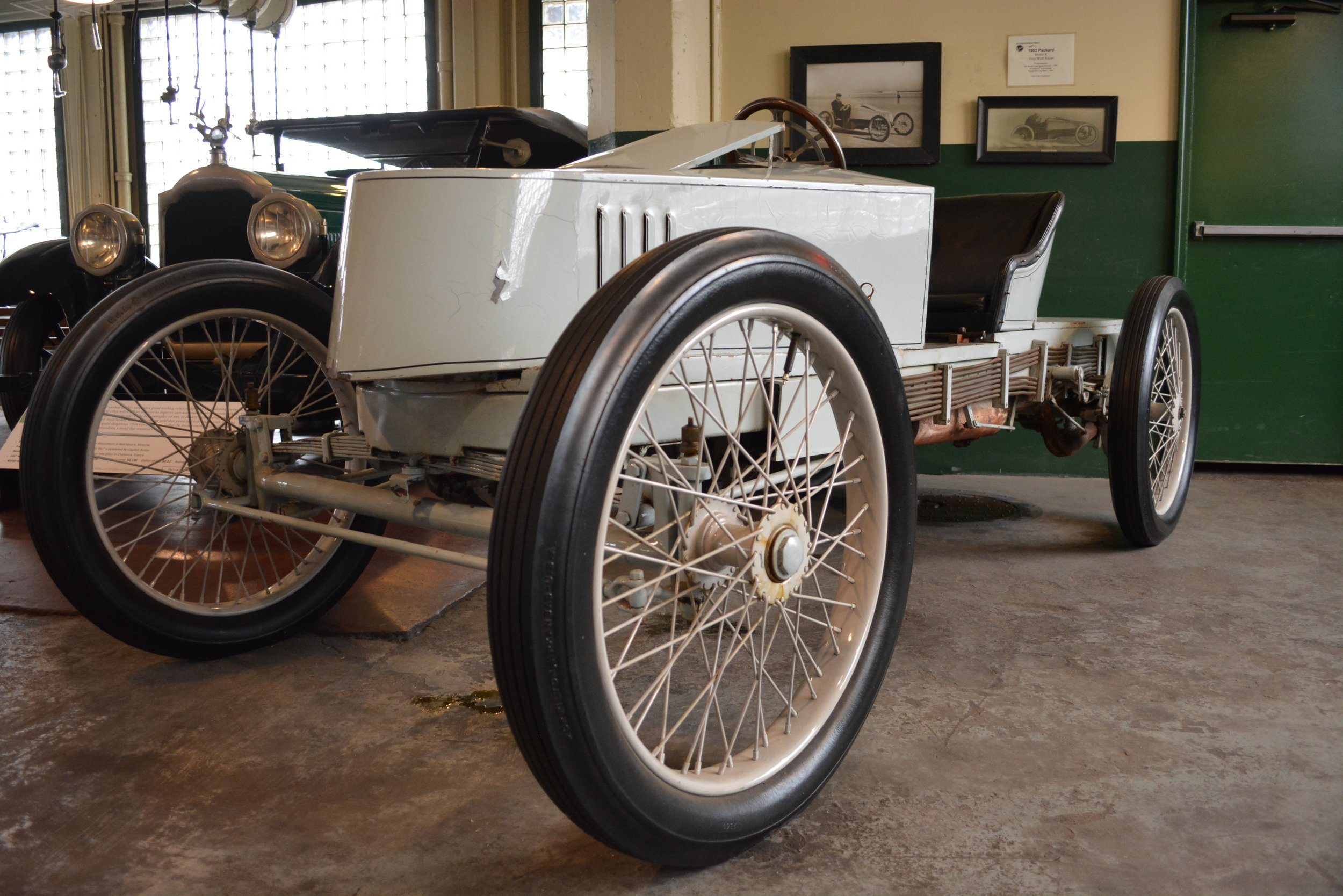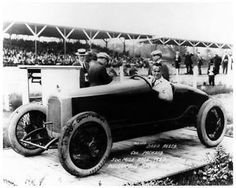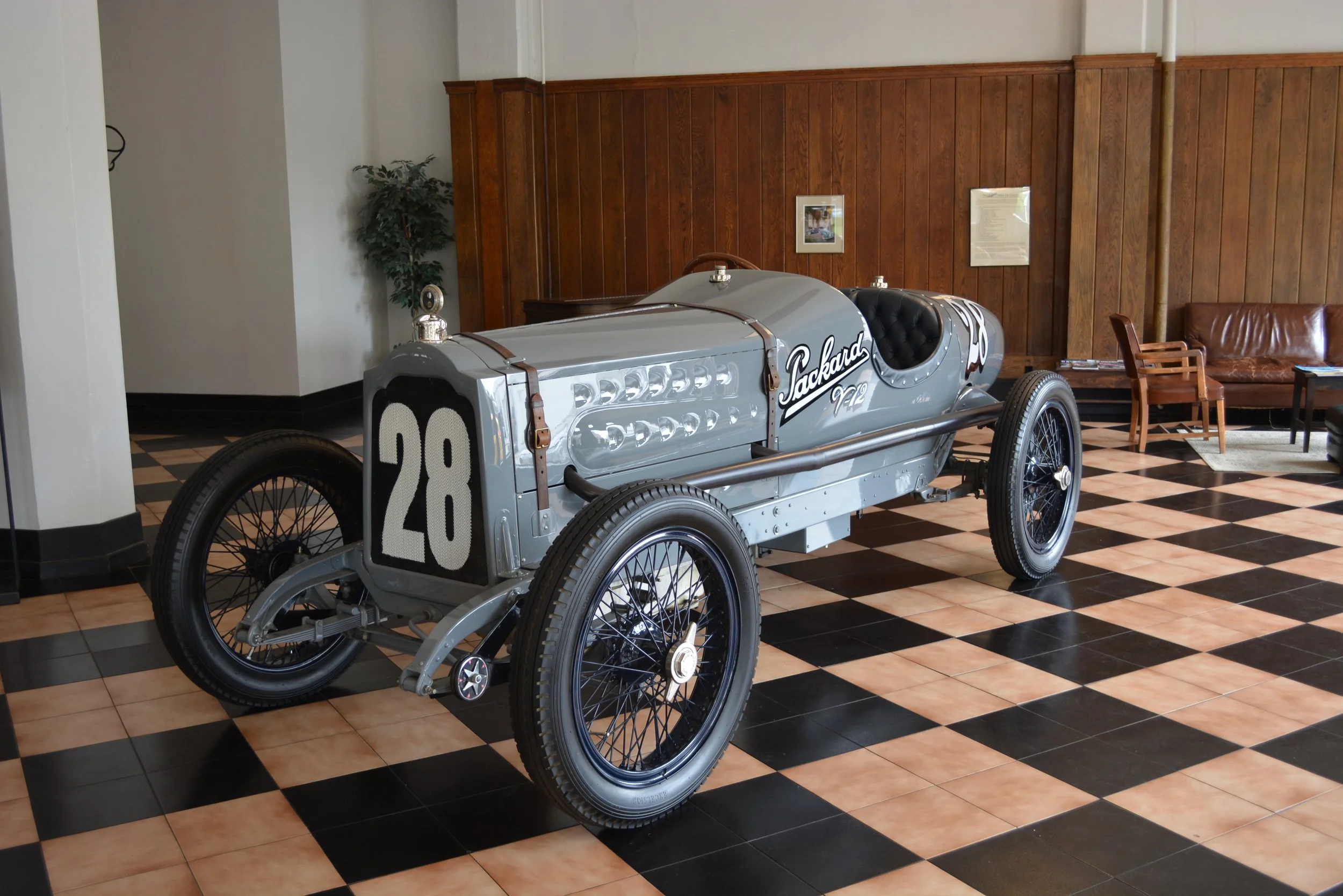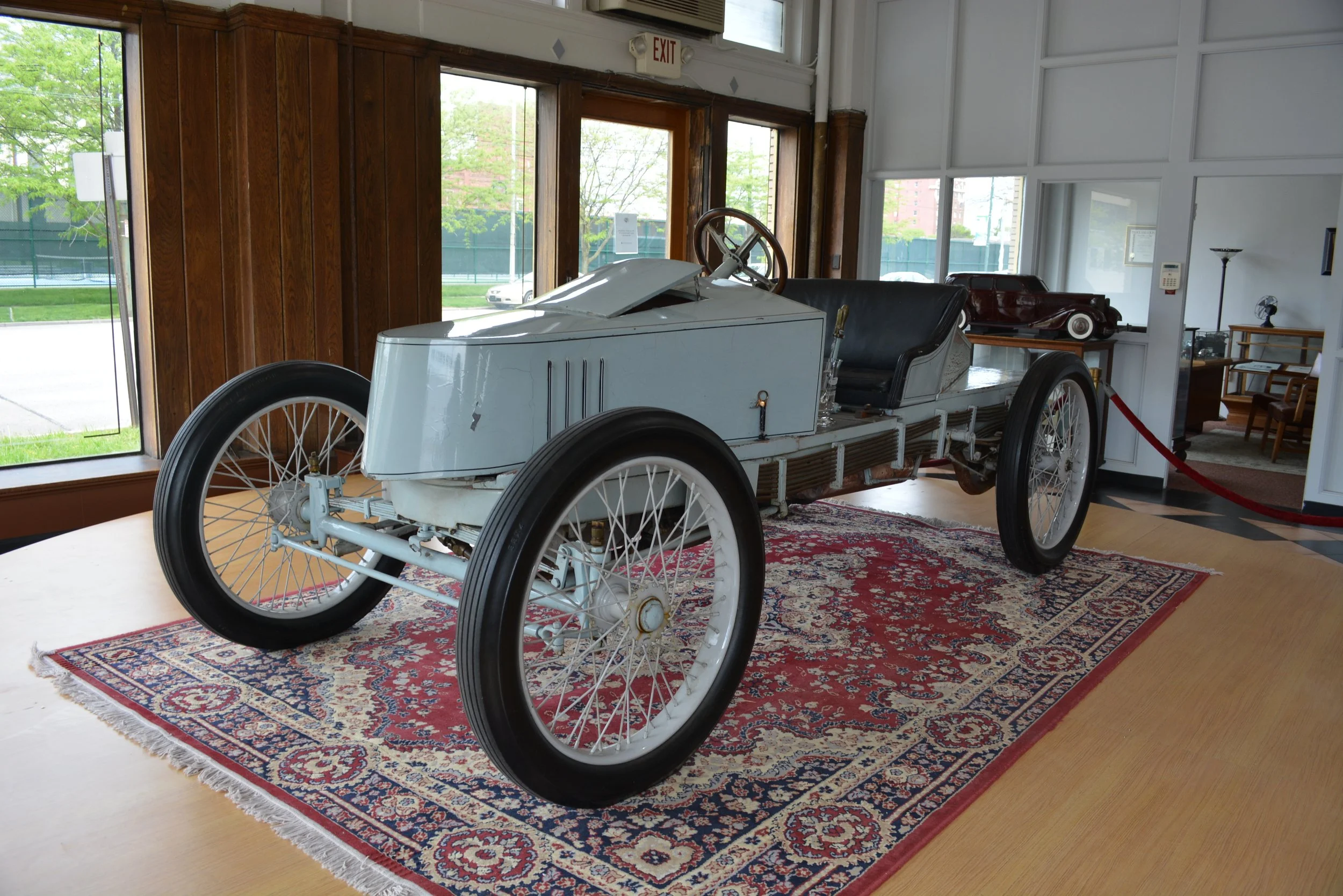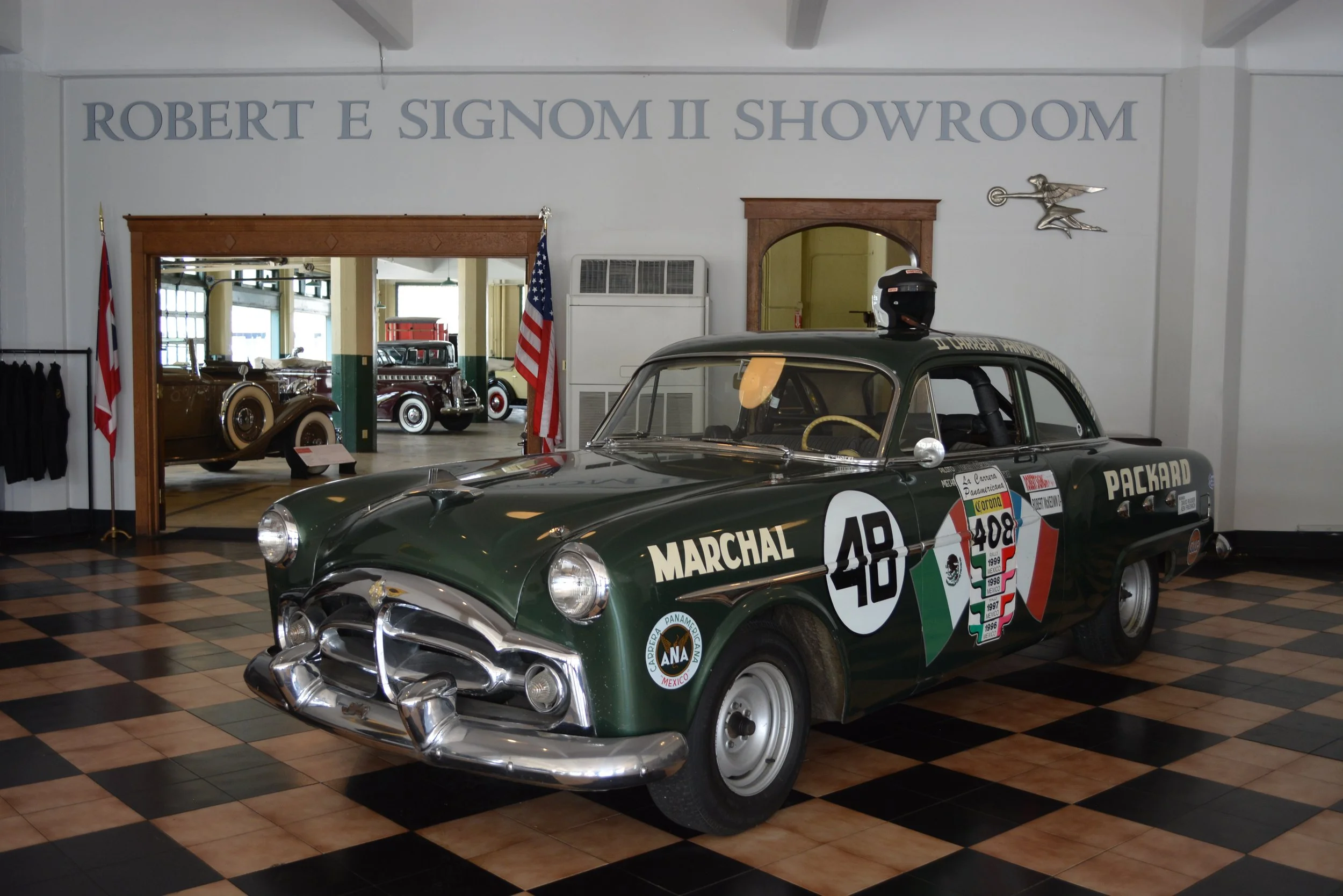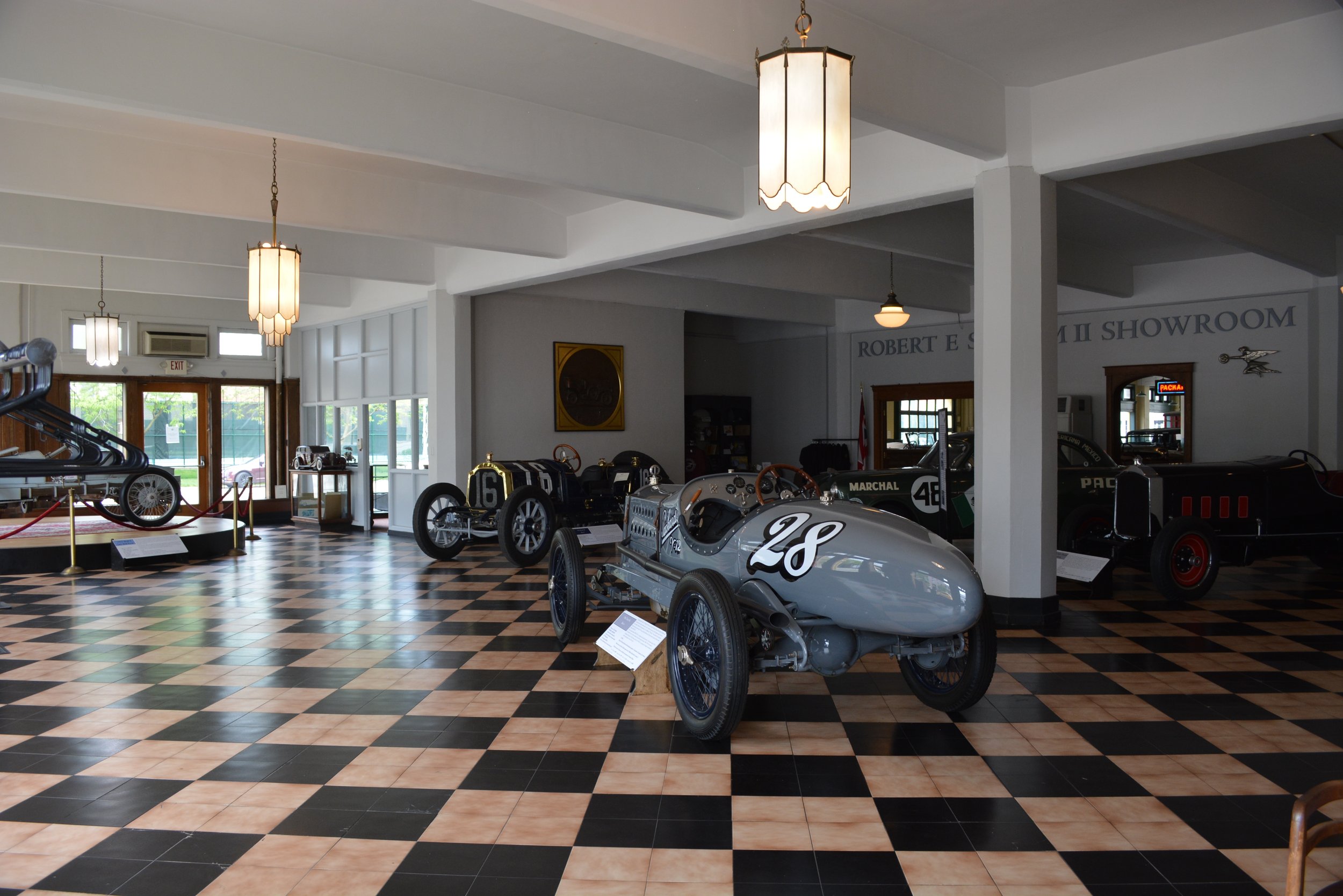Past Exhibit: Pole Position Packards (April-June 2023)
Auto Racing captured the American imagination, and quickly became a much-loved sport. In 1904 the inaugural Vanderbilt Cup Race was held in Long Island, New York, and was hailed as the first major international automobile race in the US. The 1903 Packard Gray Wolf, seen here, designed and driven by Packard Chief Engineer, Charles Schmidt, took fourth place in the Vanderbilt Cup and set the land speed record at Ormond Beach, Florida at 74 miles an hour.
Throughout the early days of American Automotive history, auto racing was a key component of car development. Manufacturers raced their cars to demonstrate durability, reliability, and – most of all – speed.
The Chicago Times-Herald Race of 1895 was the first official auto race held in the United States, won by the Duryea Motor Wagon, finishing the 70-mile course in 10 hours and 23 minutes!
Packard was navigating the racecourse to secure their place in the pantheon of great American car builders.
Packard attracted the finest drivers of the day including Joe Boyer, Leon Duray, and the famous open wheel master Ralph DePalma. DePalma piloted the 1923 Packard to a respectable 14th place finish in the Indy 500 that year.
Famously, Enzo Ferrari attended the Indianapolis 500 in 1919 and instantly became, in his words, “married to the twelve-cylinder, and I never divorced it.” Ferrari’s love for the V12 and subsequent lifelong success was rooted firmly in the Packard story, and in blissful union with Packard racing.
Packard built race cars throughout the 1920s, setting records at the Daytona Measured Mile in 1919, and entries at the Indianapolis 500 in 1916, 1919, and 1923. Packard used Indy and other racing venues to showcase Chief Engineer Col. Jesse Vincent’s new V12 “Twin Six” engine, the first production American twelve-cylinder power plant.
Packard ceased their official racing program in the mid-1920s but other enthusiasts continued to race Packard engines. Stock cars, hydroplanes, and aircraft were among the many applications that found Packard power back on the course. V12 Liberty aircraft engines made their way into many watercraft after World War One, including Gar Wood’s famous Miss America hydroplanes.
From the Northern border to the Southern border of Mexico, the Carrera Panamericana road race was held from 1950 to 1954. Jean Trévoux finished fourth with his 1951 Packard 200 in this grueling 2,178 mile road race, complete with unimproved roads, dangerous curves, and steep drops. A young Bobby Unser drove in this race, which was discontinued after 1954 because of multiple injuries and fatalities.
The Packard name became synonymous with excellence, in engineering, performance, reliability, and velocity. Packard’s “Master Motor Builders” won a reputation for the company that confirmed its status as the greatest American motorcar.
Packard’s dominance on the racecourse was secured and achieved its primary target: to sell cars.
